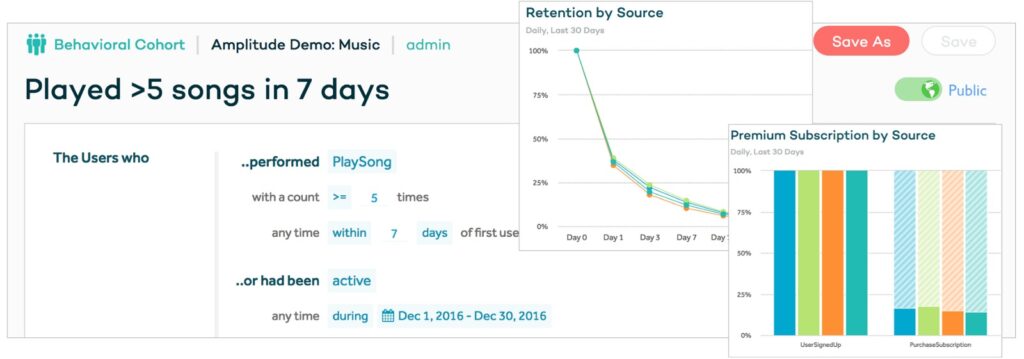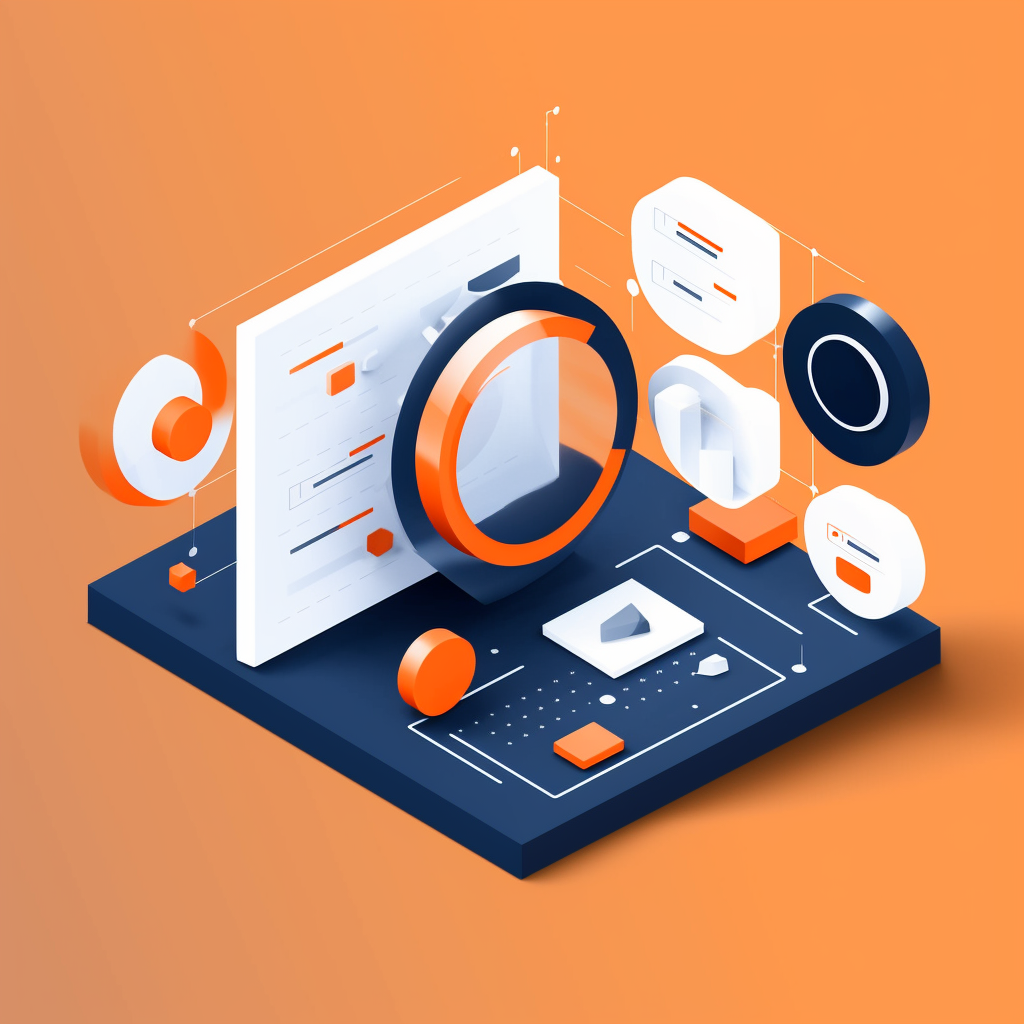Your product’s success hinges on product analytics. Without it, the necessary data to drive profit-riddled decisions simply isn’t available.
It’s through product analytics that businesses learn the true behaviors of their customers. By examining the actions taken within a product, these “revealed behaviors” come to the forefront. With this understanding, user motivations and pain points become clear and enable better product enhancements.
In this era where data pulls the strings, the ability to scrutinize your product is indispensable.
This guide will steer you through some of the prevalent questions about product analytics.
What is product analytics?
Envision product analytics as a subcategory of business intelligence. It captures and studies the usage patterns from digital products like web and mobile applications. The combination of event tracking, event properties, and event and property groupings provides essential information for product experience improvements, engagement boost, and positive business outcomes.
Compared to user surveys and solitary product testing, real-world data wins in trustworthiness.
What separates product analytics from marketing analytics?
Though often confused, product analytics and marketing analytics are two distinct ideas. Marketing analytics zeroes in on lead conversion, while product analytics is more about the user experience. This distinction is clear when success according to marketing analytics is evaluated by client acquisition, whereas product analytics starts its assessment when a customer interacts with a product. Essentially, product analytics picks up where marketing analytics leaves off.
For marketing analytics strategies, businesses typically rely on publicly accessible information leading to generalized solutions. Conversely, product analytics uses user-generated details like geographical location, age, gender, and customer experience for a more specialized approach. Data from marketing analytics may be comparable across similar industries, while product analytics data stays unique to each business.
In pursuit of customer attraction and persuasion to purchase, marketing analytics provides the necessary assistance. Product analytics, however, aims for long-term customer retention by offering improved user experiences. Simply put, marketing analytics eyes short-term goals while product analytics focuses on the long haul.
Why should we consider product analytics as important?
In the present digital-first era, for businesses to remain relevant and deliver optimally for their clients, product analytics can be the gamechanger. Today’s software users demand frictionless, instinctive, and pleasing tools, regardless of personal or professional use.
The gateway to enhance your digital product is understanding user interaction with it. This is where product analytics comes to play by offering essential data businesses can leverage to assess and optimize user experiences.
It guides product development and design
When it comes to creating a stellar product, product analytics is your dependable companion. By monitoring user events, you get an exact depiction of features that customers are using and those gathering dust.
This insight lets you eliminate unused features, resulting in a leaner, quicker, and lighter product. Additionally, unbiased data from analytics aids the process of creating superior customer experiences and navigating users towards more profitable products.
Fosters better customer relations
With the digital age in full swing, personalized experiences are on people’s expectation list. To decipher what your customers want, product analytics is the most potent tool. Listening to the data will make your products more customer-friendly and fortify loyalty.
Considering that 74% of consumers are somewhat likely to purchase solely based on their experiences as per Forbes, investing in a tool that facilitates a better customer journey would harness more loyalty and eventually improve sales figures.
Who can benefit from product analytics?
Product analytics is all about making your product decisions better – whether you’re looking at the short or long term. It can be a huge help for teams like Business Leaders, Product Managers, Product Engineers, and Product Designers, who all want to improve their product in different ways.
And it doesn’t stop there – Product Marketers and Customer Success can also use product analytics to get a better understanding of customers and their behavior.
All in all, product analytics is a powerful tool that can help you make your product even better.
Which product analytics metrics should I monitor?
At its core, product analytics is about comprehending customer behavior and trends and visualizing user engagement and flows.
Through product performance analysis, product improvements over time become feasible. Identifying useful metrics to track product success is the first step.
Here are some top metrics that product analysts frequently refer to:
- Business objectives: Info on the company’s and its products’ performance.
- Product usage: Details about user interaction with your product and the progress made by the product team on features and upgrades.
- Customer satisfaction: Metrics that ascertain if customers are having an overall good experience or not.
- Customer journey: The progression of customers’ product usage and their engagement level with the brand.
How to kickstart using product analytics?
Implementing product metrics to bolster your sales and create a more memorable product experience might seem daunting, but in reality, it’s fairly straightforward.
- Outline your goals: Transparency in why you’re creating a product and what business objectives it aims to achieve is paramount for teams. You also need to figure out the kind of data that’ll mark the performance yardstick. Such data can help pinpoint things like your product’s target audience and any potential changes needed down the line.
- Leverage the most potent tools: A plethora of tools offering user experience reports are available, including Google Analytics, Amplitude, Kissmetrics, Mixpanel, among others. Take your pick!
- Mark out a timeline of activities: Identify all the events related to your goal that you’ll need to track. These can include actions from leaving a page to signing in or emptying a cart.
How do product analytics platforms function?
A product analytics tool enables you to see how visitors are interacting with your website or app. Be it tracking clicks, page views, form fills, or other activities, you’ll gain insights into users’ journeys. Additionally, you can personalize the tool to report on your chosen key KPIs and metrics.
Here’s what an analytics platform can assist with:
- Attribution analysis: Investigates the customer touchpoints leading to a purchase.
- Funnel: Visualizes the customer journey through various buying stages, revealing any friction points or churn tendencies.
- Conversion analysis: Reviews sought-after conversion actions and spots drop-off instances.
- Segmentation: Dives deeper into user behavior by segregating them into groups based on demographics, behavior, among other factors.
- Cohort analysis: Tracks user behavior over time by categorizing users into associated groups, or cohorts.
- Churn analysis: Analyses customer churn rate to identify reasons for customer attrition.
- Retention analysis: Measures what keeps customers onboard, acting as the counter to churn.

When’s the right time for my business to consider investing in product analytics?
The best time to bring in product analytics is whenever you’re seeking to impact and refine the user experience.
Here are some scenarios when product analytics can come in handy:
- When you’re curious about user experiences on your site and aim to enhance them.
- When your goal is to deliver a well-liked product, or better yet, a loved one.
- When you’re working toward building up your data value chain, boosting user retention and conversion rates, and curtailing customer churn to scale adequately.
- When you strive to hone your data storytelling skills and keep abreast of market trends.
We’re hopeful that this article has given you a comprehensive overview of product analytics. And with the information in hand, you’re ready to start collecting and analyzing your own data. Still, we understand there’s a lot more to digital products and analytics.
If you’re already a product-led company or planning to shift to a product-led growth model, StaffGrabbers specializes in sourcing and recruiting for various roles, including Product Management, Product Design, Product Marketing, and Product Analytics.
Feel free to connect with us at hello@staffgrabbers.com for a premium recruiting experience.











